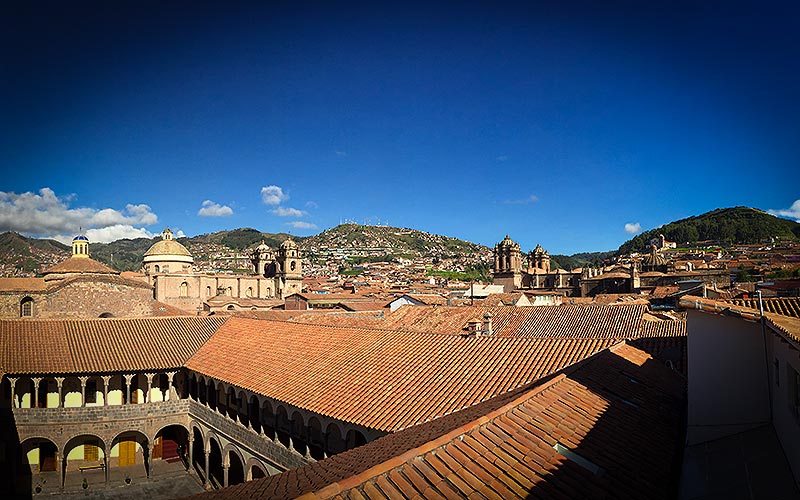CUSCO PUNO BUS
Full Day | $ 45.00

Cusco or Cuzco (in the Peruvian way of naming it) is a department of Peru located in the southeast part of the country. It occupies a territory of more than 71.9 thousand square kilometers that includes mostly mountainous territories, the lowest covered by the Amazon rainforest.
Cusco Puno are the regions thet you find the first Andean civilizations with the influence of Huari and Tiahuanaco. It is also the cradle of the Inca Empire and site of the resistance of the Incas of Vilcabamba after the Conquest of Peru.
It is in this department, in the Marcahuasi farm (Mollepata), where in the 16th century the first vine of the American continent is grown and the first pisco is produced. Its main agricultural resources are corn, barley, quinoa, tea and coffee. In mining gold stands out and in energy the gas.
Cusco (Southern Quechua: Qusqu, Qosqo, pronounced [Q'osqo]), or Cusco (recent official spelling), is a city in southeastern Peru located on the eastern slope of the Andes Mountains, in the river basin Huatanay, tributary of the Vilcanota. It is the capital of the Department of Cusco and it is also declared in the Peruvian constitution as the historical capital of the country.
Formerly it was the capital of the Inca Empire and one of the most important cities of the Viceroyalty of Peru.Declared a World Heritage Site in 1983 by UNESCO, it is usually called, due to the large number of monuments it has, such as the "Rome of America ". It has an estimated population of 358,052 according to the 2007 Peruvian census, which places it among the most populated cities in the country.
Geography of Cusco expands through the valley that forms the Huatanay River and the surrounding hills. Its climate is generally dry and temperate. It has two defined seasons: one dry between April and October, with sunny days, cold nights with frost and an average temperature of 13 ° C; and another rainy, from November to March, average temperature 12 ° C. On sunny days the temperature reaches 20 ° C, although the light wind of the mountain is usually cold.
Cusco is under the macro-climatic influence of large air masses from the southern eastern jungle, as well as the winds of the Peruvian-Bolivian Altiplano that are rather cold and dry, as well as those that come from Patagonia, entering through the south east zone and that generally suppose climatic events of greater scale.
On the other hand, the local winds that are generated in its valleys and in its plains have the function of distributing heat and humidity throughout the day. The average annual temperature fluctuates between 10.3 ° C and 13 ° C (between 50.54 ° and 52.34 ° Fahrenheit); but these temperatures vary according to the area.
Cusco has a very rugged relief. The mountain ranges that start from the central and eastern Andean chain have worn materials that have been eroded by the rivers of the Atlantic slope and by the action of pp.
This is the case of Vilcabamba, Ausangate and Vilcanota. To the east, the central area, the Vilcanota mountain range separates the waters that flow to the Amazon from the waters that flow to the Amazon and direct them to the Titicaca. Only to the north of the region the relief is jungle becomes smooth and with hills.
The Cusqueño and in general the Peruvian, is a festive town par excellence that has turned religious celebrations into true folk festivals where ceremonies and cults are as important as: dances, meals, and drinks. For example there are typical foods that are prepared only for certain parties and the same happens with dances.
The most important party in the Cusco festival is Holy Week, with its processions of Holy Monday and Good Friday. To these parties we must add two that take place in places somewhat away from Cusco, La Virgen del Carmen in Paucartambo and Qoylloritti, near the town of Ocongate. Both match in originality and beauty to the festivities of the city.
The celebration of the Inti Raymi is a tradition that comes to our day since the time of the Inca Empire. It has recovered with all its splendor for more than 50 years and with increasing strength and appeal. The ancient great Inca city of Cusco is home to the most striking party that brings together many foreign visitors. It is also done in almost all the towns that formed the Old Empire, as in the case of northern Argentina.
The Inti Raymi is the tribute that the Peruvian man pays to the Sun and to all nature. This is one of the many religious manifestations of Peru. An excellent representation of the Inti Raymi is the one performed at the Saqsayhuaman, with the participation of hundreds of people in the ceremony. It is the richest party of the Inca empire, which is offered to the world.